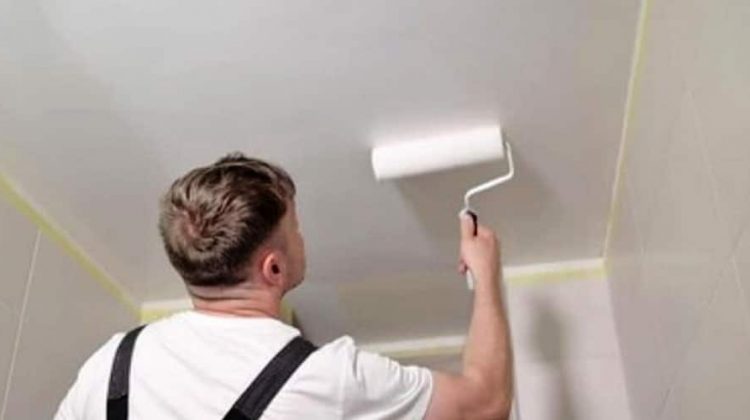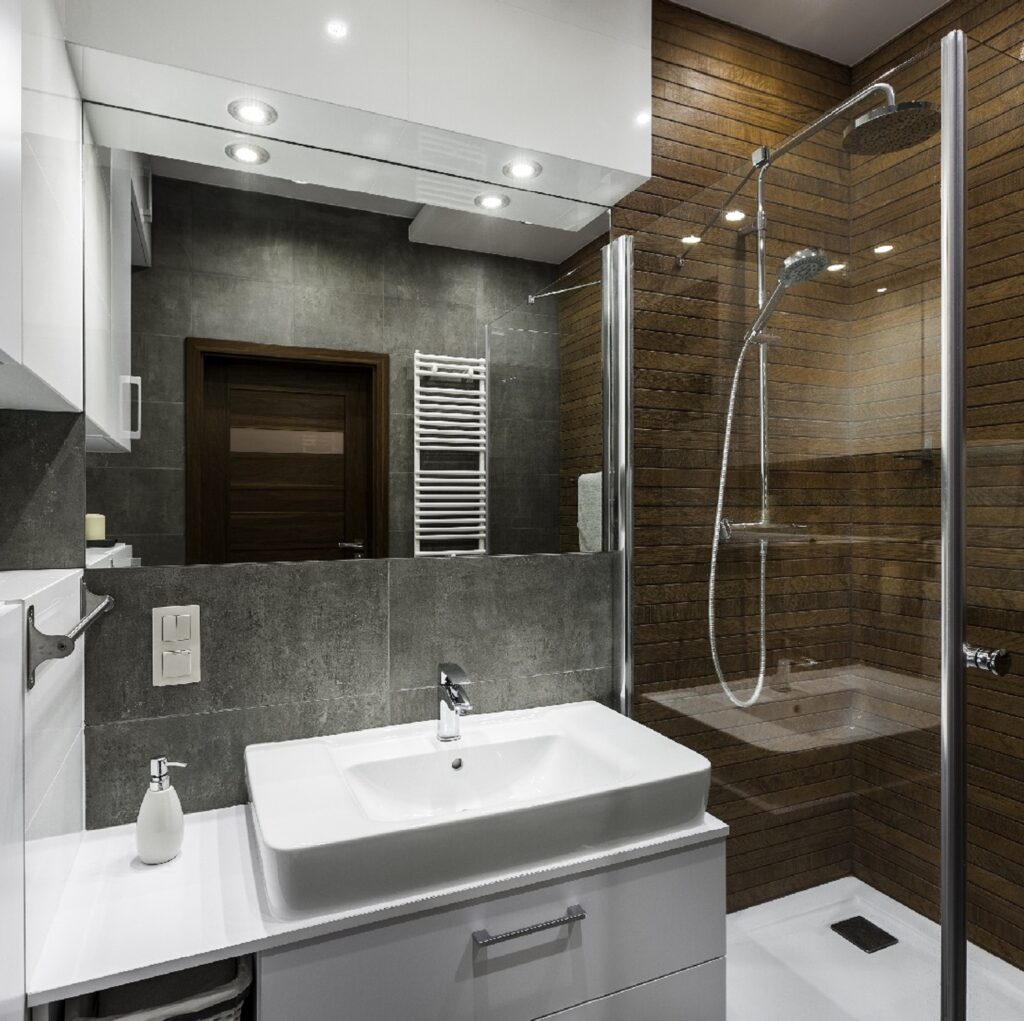Factors to Consider When Choosing Paint

Choosing the right paint for your bathroom ceiling is crucial for both aesthetics and functionality. The bathroom environment presents unique challenges, such as high humidity levels, potential for mildew growth, and frequent cleaning.
Humidity and Mildew Resistance
High humidity levels in bathrooms can lead to the growth of mildew, which can damage the paint and create an unpleasant odor. Therefore, choosing a paint with a mildew-resistant formula is essential. These paints contain special additives that inhibit the growth of mildew and mold, preventing damage and preserving the paint’s appearance.
Natural Light and Paint Color
The amount of natural light in your bathroom can significantly impact the perceived color of the paint. Bathrooms with limited natural light might benefit from lighter colors, which can create a sense of spaciousness. Conversely, bathrooms with ample natural light can handle darker colors without appearing too gloomy.
Paint Finish
The finish of the paint affects the overall appearance and durability of the bathroom ceiling. Here’s a breakdown of common finishes:
- Matte: Matte finishes offer a flat, non-reflective surface that can help conceal minor imperfections. They are also easier to touch up, making them ideal for high-traffic areas like bathrooms.
- Satin: Satin finishes offer a slightly sheen, making them more durable and washable than matte finishes. They are also easier to clean and resist stains, making them a good choice for bathrooms.
- Gloss: Gloss finishes are highly reflective and offer the highest level of durability. They are also easy to clean and resist moisture, but they can highlight imperfections on the ceiling.
Applying Paint to a Bathroom Ceiling: What Type Of Paint For Ceiling In Bathroom

Preparing a bathroom ceiling for painting is essential to achieve a smooth and long-lasting finish. This involves several steps, including cleaning, patching, and sanding, which ensure a clean and even surface for the paint to adhere to.
Preparing the Bathroom Ceiling for Painting
Proper preparation is crucial for achieving a successful paint job. The following steps will guide you through the process:
- Cleaning the Ceiling: Begin by removing any loose debris, cobwebs, or dust using a broom or vacuum cleaner. Then, use a damp cloth or sponge to wipe down the ceiling, ensuring to remove any grime, mold, or mildew. Allow the ceiling to dry completely before proceeding to the next step.
- Patching and Repairing: Inspect the ceiling for any cracks, holes, or imperfections. Use a patching compound or spackling paste to fill these areas, ensuring to apply it evenly and smooth it out with a putty knife. Allow the patching compound to dry completely according to the manufacturer’s instructions.
- Sanding: Once the patching compound is dry, sand the patched areas gently with fine-grit sandpaper to create a smooth and even surface. This will ensure that the paint adheres properly and avoids any rough patches or imperfections.
Techniques for Applying Paint to a Bathroom Ceiling, What type of paint for ceiling in bathroom
Several techniques can be used to apply paint to a bathroom ceiling, each with its own advantages and disadvantages:
- Roller: Using a roller is the most common and efficient method for painting large areas like ceilings. It provides a smooth and even finish, especially when using a high-quality roller cover. Choose a roller with a nap length suitable for the texture of the ceiling. For a smooth ceiling, a short nap roller is recommended, while a longer nap roller is suitable for textured ceilings.
- Brush: A brush is useful for painting edges, corners, and areas that are difficult to reach with a roller. It allows for precise application and can be used to create decorative effects. Use a high-quality angled brush with a firm bristle for painting the ceiling. Apply the paint in thin, even strokes, overlapping each stroke slightly.
- Spray Gun: A spray gun provides a fast and efficient way to apply paint, especially for large areas. It can create a smooth and even finish, but it requires practice and proper technique to avoid overspray and drips. Use a spray gun designed for latex paint and follow the manufacturer’s instructions carefully.
Tips for Achieving a Smooth and Even Finish
- Use a Primer: Applying a primer before painting helps create a smooth and even surface for the paint to adhere to. It also helps to seal the ceiling and prevent the paint from absorbing into the surface. Choose a primer specifically designed for bathroom ceilings, as it will resist moisture and mildew.
- Use Thin Coats: Apply thin, even coats of paint, allowing each coat to dry completely before applying the next. This will help prevent drips and ensure a smooth finish. It is generally recommended to apply two coats of paint for optimal coverage and durability.
- Use a Paint Extension Pole: A paint extension pole allows you to reach the entire ceiling without having to use a ladder. This is especially helpful for high ceilings and can make the painting process easier and safer.
- Clean Your Tools Regularly: Clean your roller, brush, or spray gun thoroughly after each use to prevent paint from drying and clogging. This will ensure that your tools are ready for the next painting project and will last longer.
What type of paint for ceiling in bathroom – When choosing paint for your bathroom ceiling, consider a semi-gloss or satin finish for easy cleaning. These finishes are also more resistant to moisture and mildew, which is especially important in a humid environment like a bathroom. To ensure the best protection against moisture, consult a guide on the best bathroom paint for moisture.
This will help you select a paint that is specifically formulated to withstand the unique conditions of a bathroom, providing a long-lasting and beautiful finish for your ceiling.
When choosing paint for your bathroom ceiling, consider an eggshell or satin finish for its durability and easy cleaning. These finishes are ideal for resisting moisture and mildew, common issues in bathrooms. For a comprehensive guide on painting your entire bathroom, including the ceiling, check out this helpful step-by-step guide: how to paint your bathroom.
After following these instructions, you’ll have a beautifully painted bathroom ceiling that stands up to the challenges of a high-humidity environment.